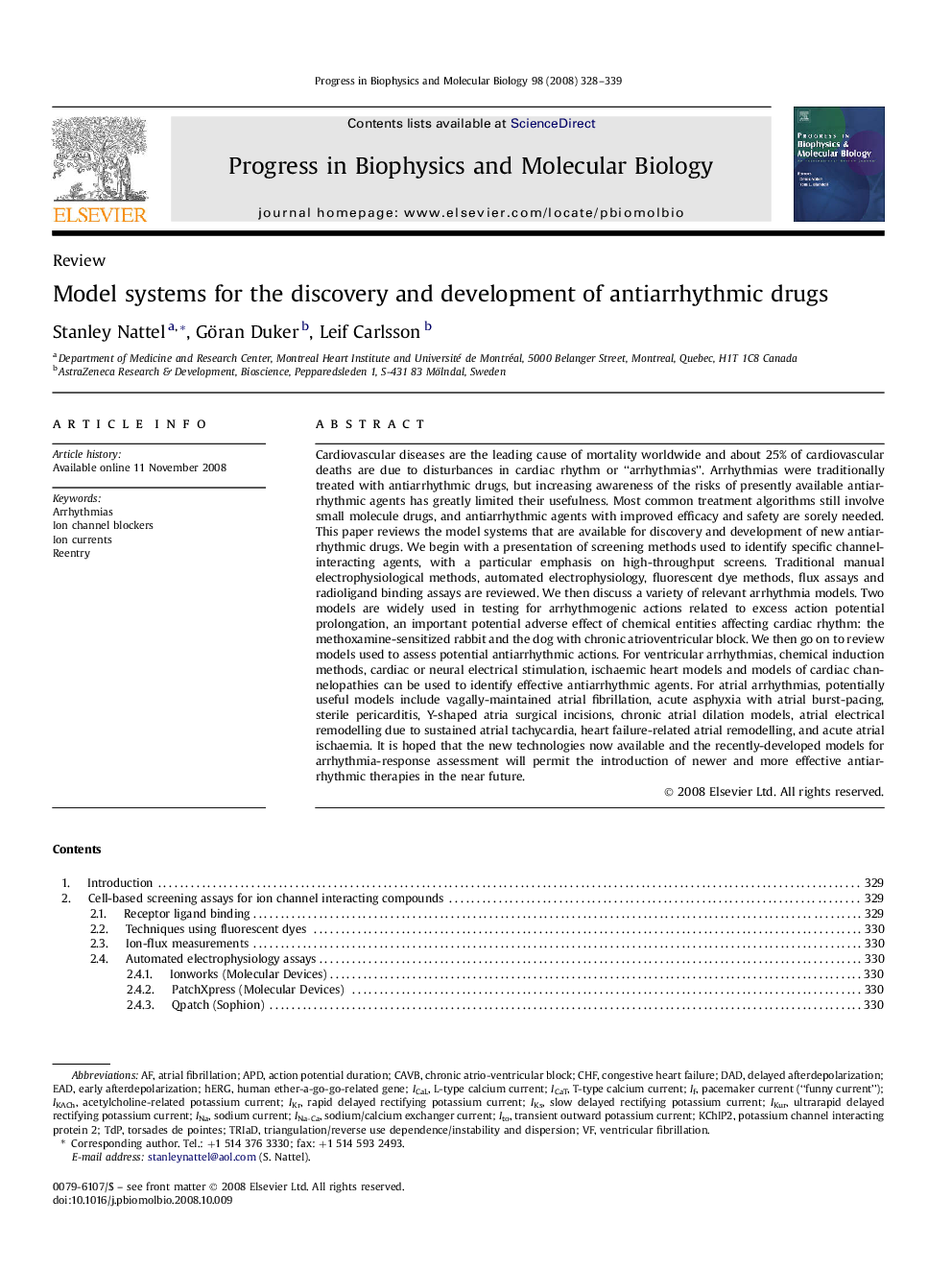| کد مقاله | کد نشریه | سال انتشار | مقاله انگلیسی | نسخه تمام متن |
|---|---|---|---|---|
| 8401886 | 1544494 | 2008 | 12 صفحه PDF | دانلود رایگان |
عنوان انگلیسی مقاله ISI
Model systems for the discovery and development of antiarrhythmic drugs
دانلود مقاله + سفارش ترجمه
دانلود مقاله ISI انگلیسی
رایگان برای ایرانیان
کلمات کلیدی
DADIKAChT-type calcium currentKChIP2CAVBICaLIKrTorsades de pointesEADTDPAPDIKSHERGICATChFINa - INAArrhythmias - آریتمی هاearly afterdepolarization - اوایل پس از دپولیزاسیونITO - اینReentry - بازگرداندنsodium current - جریان سدیمTransient outward potassium current - جریان پتاسیم بیرون گذراL-type calcium current - جریان کلسیم L نوعIon currents - جریان یونTriad - سه گانهIKur - فرارVentricular fibrillation - فیبریلاسیون بطنیAtrial fibrillation - فیبریلاسیون دهلیزیAction potential duration - مدت زمان بالقوه عملIon channel blockers - مسدود کننده های کانال یونیcongestive heart failure - نارسایی احتقانی قلبdelayed afterdepolarization - پس از depolarization به تعویق افتادhuman ether-à-go-go-related gene - ژن وابسته به اتر-أ-go-go انسان است
موضوعات مرتبط
علوم زیستی و بیوفناوری
بیوشیمی، ژنتیک و زیست شناسی مولکولی
بیوفیزیک
پیش نمایش صفحه اول مقاله

چکیده انگلیسی
Cardiovascular diseases are the leading cause of mortality worldwide and about 25% of cardiovascular deaths are due to disturbances in cardiac rhythm or “arrhythmias”. Arrhythmias were traditionally treated with antiarrhythmic drugs, but increasing awareness of the risks of presently available antiarrhythmic agents has greatly limited their usefulness. Most common treatment algorithms still involve small molecule drugs, and antiarrhythmic agents with improved efficacy and safety are sorely needed. This paper reviews the model systems that are available for discovery and development of new antiarrhythmic drugs. We begin with a presentation of screening methods used to identify specific channel-interacting agents, with a particular emphasis on high-throughput screens. Traditional manual electrophysiological methods, automated electrophysiology, fluorescent dye methods, flux assays and radioligand binding assays are reviewed. We then discuss a variety of relevant arrhythmia models. Two models are widely used in testing for arrhythmogenic actions related to excess action potential prolongation, an important potential adverse effect of chemical entities affecting cardiac rhythm: the methoxamine-sensitized rabbit and the dog with chronic atrioventricular block. We then go on to review models used to assess potential antiarrhythmic actions. For ventricular arrhythmias, chemical induction methods, cardiac or neural electrical stimulation, ischaemic heart models and models of cardiac channelopathies can be used to identify effective antiarrhythmic agents. For atrial arrhythmias, potentially useful models include vagally-maintained atrial fibrillation, acute asphyxia with atrial burst-pacing, sterile pericarditis, Y-shaped atria surgical incisions, chronic atrial dilation models, atrial electrical remodelling due to sustained atrial tachycardia, heart failure-related atrial remodelling, and acute atrial ischaemia. It is hoped that the new technologies now available and the recently-developed models for arrhythmia-response assessment will permit the introduction of newer and more effective antiarrhythmic therapies in the near future.
ناشر
Database: Elsevier - ScienceDirect (ساینس دایرکت)
Journal: Progress in Biophysics and Molecular Biology - Volume 98, Issues 2â3, OctoberâNovember 2008, Pages 328-339
Journal: Progress in Biophysics and Molecular Biology - Volume 98, Issues 2â3, OctoberâNovember 2008, Pages 328-339
نویسندگان
Stanley Nattel, Göran Duker, Leif Carlsson,